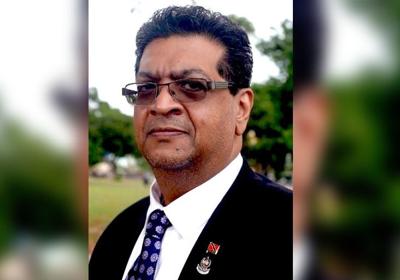Recently, Apple Inc. purchased and retired 100,000 carbon credits from Guyana, underscoring the growing global recognition and marketability of environmental stewardship. This transaction, highly praised by Guyana’s Vice-President Dr Bharrat Jagdeo, symbolises a noteworthy milestone not only for Guyana but potentially for the entire Caribbean region, including Trinidad and Tobago. Guyana’s approach to monetising forest protection and sustainable practices presents an instructive model, one Trinidad and Tobago can and should emulate.
Carbon credits are tradable certificates representing verified reductions in carbon emissions, either through direct emissions cuts or by protecting ecosystems like forests. When a company purchases and retires these credits, the emission reductions are permanently taken off the market, thus ensuring genuine environmental benefits. Guyana entered this arena in 2022, issuing credits through ART’s TREES mechanism, becoming a global leader in forest carbon credits.
Guyana’s success has drawn high-profile international companies, including Apple and Hess Corporation, validating its robust environmental policies. Importantly, the financial outcomes are tangible. Hess Corporation’s commitment alone injects a significant US$740 million into Guyana over ten years. Apple’s participation, though smaller in financial terms, significantly enhances Guyana’s international credibility, marking it as a serious player in global climate finance.
Trinidad and Tobago, faced with economic diversification challenges and global pressures to meet climate commitments, should closely examine Guyana’s strategy. With significant forested areas in Trinidad, notably the Northern Range, there is genuine potential to enter this market. Engaging in carbon credit mechanisms would not only create a new, sustainable revenue stream but also strengthen Trinidad and Tobago’s international environmental profile.
By adopting a similar carbon credit framework, Trinidad and Tobago could replicate Guyana’s successes. The first step is establishing a national framework aligned with international standards such as ART/TREES or REDD+. This includes thorough assessment and documentation of the country’s forests, verification of their carbon capture capacities, and certification under recognized international bodies. Success hinges on robust scientific and environmental evaluations, transparent governance, and strict compliance to international standards.
Beyond economic benefits, implementing a carbon credit system reinforces Trinidad and Tobago’s global image as a progressive nation committed to climate leadership. It would provide clear evidence of meeting international climate pledges and underscore the country’s proactive stance on environmental stewardship.
Furthermore, the domestic implications are substantial. Revenue from carbon credit sales can be strategically allocated to sectors urgently requiring investment. Guyana’s approach provides a useful reference point: 15% of its carbon credit earnings directly support indigenous Amerindian communities, funding approximately 4,000 targeted community projects. The remaining 85% supports national infrastructure and climate resilience initiatives.
Trinidad and Tobago could similarly earmark funds to address critical local environmental issues, such as flood mitigation infrastructure, sustainable agriculture, renewable energy projects, and reforestation efforts. Such initiatives not only boost local economies and improve living standards but also fortify the nation against climate change impacts. Moreover, investment in these areas would create employment opportunities, particularly in rural communities, stimulating local economies and addressing economic disparities.
Participating in carbon markets could also spur broader economic diversification, a vital consideration given Trinidad and Tobago’s current economic reliance on hydrocarbons. Carbon credits offer an innovative economic avenue, attracting international investment and driving local innovation and entrepreneurship, especially in green technology and sustainable resource management. This diversification could help stabilise the economy against volatility in global oil and gas markets, making it more resilient and sustainable in the long term.
Critically, pursuing this pathway would align Trinidad and Tobago with global economic trends toward sustainability. With companies increasingly required to offset emissions due to regulations or voluntary commitments, the demand for legitimate, verifiable carbon credits will continue to expand. Trinidad and Tobago could position itself strategically in this emerging market, ensuring long-term economic resilience.
Of course, challenges exist, notably in developing transparent governance frameworks and ensuring broad public engagement. Building public awareness and support through education campaigns and involving local communities and stakeholders early in the process would be essential. However, Guyana’s experience clearly demonstrates these obstacles are manageable through political will, transparency, and inclusive planning. By learning from Guyana’s established practices, Trinidad and Tobago can efficiently navigate the complexities of international environmental finance.
Therefore, the Government of Trinidad and Tobago should urgently consider adopting a similar carbon credit strategy. By doing so, it not only capitalises on economic opportunities but also genuinely contributes to global efforts against climate change, benefiting citizens both environmentally and economically. The time for Trinidad and Tobago to act decisively in embracing this path of sustainable growth, inspired by Guyana’s example, is now.
The author is former Mayaro MP





